
© Herbert Migdoll. (Click image for larger version)
The Joffrey Ballet
Age of Innocence, After the Rain, The Green Table
California, Berkeley, Zellerbach Hall
26 January 2013
joffrey.org
calperfs.berkeley.edu
It has been ten years since the Joffrey Ballet performed a full program in the San Francisco Bay Area. I last saw them at the Flint Center in Cupertino on a stage that was ridiculously small, dancing an all-Diaghilev program. And that had been ten years since the company had last appeared at the opera house in San Francisco. A drought so severe, two performances in twenty years, can hardly be declared over by virtue of two performances in Berkeley. Perhaps Cal Performances would consider adding them to its annual roster.

© Herbert Migdoll. (Click image for larger version)
Edwaard Liang’s Age of Innocence, purportedly inspired by Jane Austen’s novels to show women’s repression in the late 18th and early 19th centuries, opens the evening. After seeing his Symphonic Dances at the San Francisco Ballet last spring I didn’t have much hope for this one. It looks like a budget-priced Jirí Kylián/Nederlands Dans Theater knock-off. Corsets minus the full skirts, formality and underlying oppression without subtle choreography, too much unimaginative symmetry in the floor patterns, and boringly academic, often awkward, choppy movement phrases. There are far too many exits and entrances, possibly a reflection of our hi-tech soundbite mentally, but certainly not one of an era two centuries ago. The company sometimes has trouble keeping in synch, but does a commendable job overall given the material. The highlight is the dancing in the pas de deux of the “Obey Thee” section. Victoria Jaiani and Fabrice Calmels employ their immaculate technique to display deep musicality and heartfelt connection.
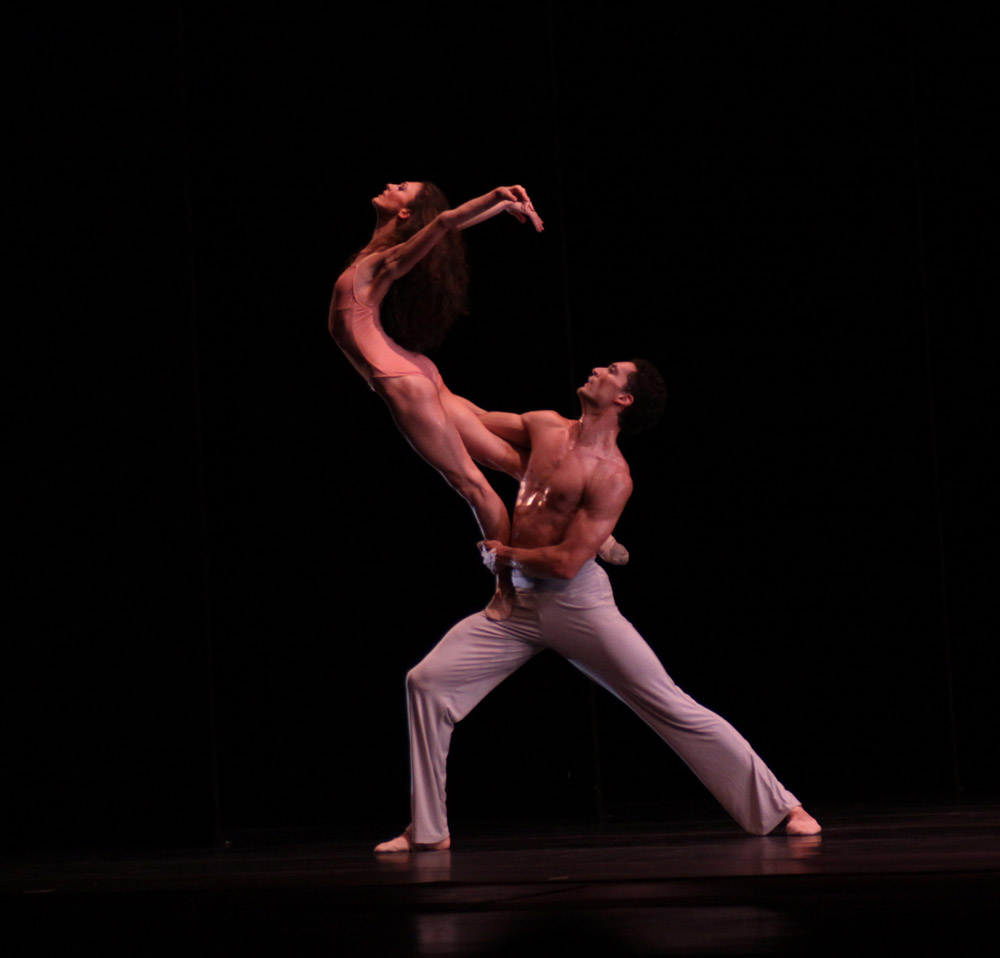
© Herbert Migdoll. (Click image for larger version)
Christopher Wheeldon made After the Rain for New York City Ballet and the Joffrey Ballet is the only other company to have the rights to perform it in its entirety. It is one of Wheeldon’s better endeavours. Pared-down and simplified compared to some other works which are crammed too full with steps and speed, here the dancers actually have the time and space to relate to each other on some human level. I am definitely relishing the swooping flow of movement that was lacking in the previous piece, though keeping all three couples in unison for much of the time is tiresome. The second part is the same pas de deux the San Francisco Ballet performed at their Gala two nights before. The SFB dancers Yuan Yuan Tan and Damian Smith, were cooler, more detached, hovering near abstraction in a very serene and touching way. Now the dancers, again Jaiani and Calmels, work their wizardry. They are able to make me feel like I’m seeing a new dance. They are vibrantly alive and emotionally engaged, so much so that the perfect technique simply vanishes and we are left with inspired performing.
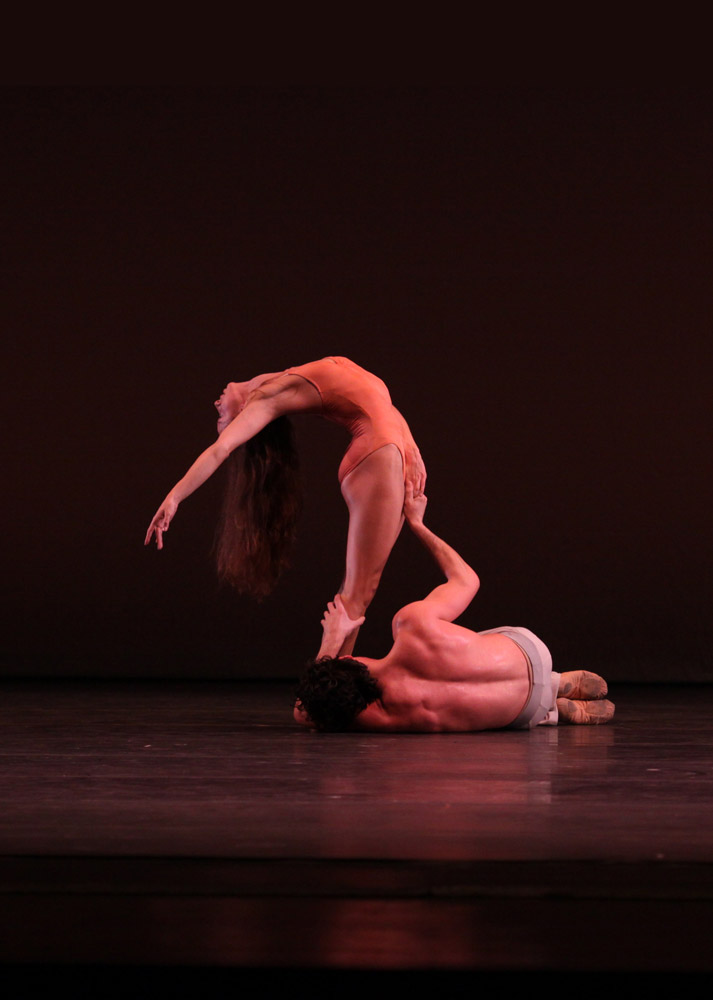
© Herbert Migdoll. (Click image for larger version)
Closing the program is Kurt Jooss’s anti-war ballet from 1932,The Green Table, one of the greatest pieces of choreography ever created and still relevant after more than 80 years. I saw this ballet many times as a student (see disclosure below) with the original Joffrey cast who had worked with Jooss himself for the first American mounting in 1967. The intensity that Maximiliano Zomosa brought to the role of Death wasn’t surprising in the end. He had seen a production of this ballet in his native Chile, was so moved that he abandoned medical studies and became a dancer so he could do the role himself. Anyone who had seen him could never forget his complete transfiguration into the part. Then tragically in 1969 he committed suicide, aged 31. Alas, I have the highest standard against which to measure all other interpreters, but, fortunately, Dylan Gutierrez is powerfully present as Death, never once leaving character, and chillingly indifferent to the pain and suffering he inflicts. The other dancers do an excellent job, though I still wish I could see Gary Chryst’s genius in the role of the Profiteer one more time. And fortuitously, instead of recorded music as in the first two ballets, we get Mungunchimeg Buriad and Paul James Lewis on two pianos in the orchestra pit playing F.A. Cohen’s score, a very important element in the piece.
Initial 7 minutes of The Green Table
The Joffrey Ballet was one of my favorite companies until artistic director Robert Joffrey died in1988 from AIDS. He had built an incredible repertoire that included the Diaghilev works – le Sacre du Printemps, l’Apres-midi d’un Faune, le Spectre de la Rose, Parade, le Tricorne, les Noces – as well as a large collection of Frederick Ashton ballets – Façade, Wedding Bouquet, Les Patineurs, Monotones I and II, La Fille mal gardée, Illuminations, Jazz Calendar, Five Waltzes in the Manner of Isadora Duncan, The Dream, and Cinderella. In the following nearly two decades under artistic director Gerald Arpino, the fortunes of the company waxed and waned, and the Bay Area was hardly ever one of their tour destinations. With the appointment of Ashley Wheater in 2007, the troupe seems on an upward swing to regain its former glory. Let’s hope they return frequently and bring both the historic masterpieces and newly created work.
—oOo—
Full disclosure – I first saw the ten-year-old Joffrey Ballet in 1966 when they toured the mid-western United States. American Ballet Theatre had come through a few weeks earlier looking quite dispirited and frayed around the edges while on a string of one-night stands and I was very disillusioned by them. Now keeping my expectations low to avoid further disappointment, I went to the Joffrey performance and was ecstatic to discover the company to be fresh and enthusiastic, with choreography I had never even heard about. I was smitten. Four months later I went to New York and took classes for a month at their school. (This was in the days before summer intensives.) There I discovered my mentor, Hector Zaraspe, and vowed to return to study with him when I graduated from high school. Over a year later I was back and studied there for two and a half years before moving to Europe. Frequently dancers from the company took Zaraspe’s class along with me and I watched them on stage at City Center in almost every performance because students of the school could get box office vouchers for tickets costing only one dollar.
An interview with Kurt Jooss and Robert Joffrey about the Green Table:
My 2003 review which explains why the Joffrey doesn’t come more often:
The Dance Insider: Flash Review 2, 6-24: ‘Rite’ Ballet, Wrong Feeling
Joffrey Ballet of Chicago Mummifies Diaghilev
By Aimée Ts’ao
Copyright 2003 Aimée Ts’ao
CUPERTINO, California — Ten years after the Joffrey Ballet visited the Bay Area for the last time, its successor, the Joffrey Ballet of Chicago, flew into the area this past weekend. Unfortunately, it decamped not at the San Francisco War Memorial Opera House, where the Joffrey Ballet used to perform in the “good old days,” but at the Flint Center in Cupertino, 45 miles south. I say unfortunately because the last time I saw the Joffrey Ballet at the Opera House, they danced a Diaghilev program of Leonide Massine’s “Parade” and Nijinsky’s “L’Apres-midi d’un Faune” and “Le Sacre du Printemps,” with full orchestra. It was glorious. Times changed. Ballet companies no longer tour so frequently and when they do, they don’t come as often to San Francisco, as the Opera House is not available due to expanded opera and ballet seasons. And there is no other theater in the environs with an adequately large stage and backstage area to accommodate large productions. While I applaud the Flint Center for bringing the Joffrey Ballet of Chicago, and with such a powerful program of “L’Apres-midi d’un Faune,” “Le Sacre du Printemps,” and Bronislava Nijinska’s “Les Noces,” I am disappointed that live music could not be arranged, especially given the historical importance of these ballets.
The evening opens with “Les Noces,” to the Stravinsky score. While the depiction of a Russian peasant wedding should at the very least stir up some emotions –joy, loss, fear — instead the dancers look wooden. Any attempts at showing feelings are mere superficial gestures. The cast needs coaching to find the inner sources of the varied emotions as well as demonstrating an understanding of the context, social and psychological, of the story. Though the current production was staged by Howard Sayette, who worked with Nijinska’s daughter Irina in setting “Les Noces” for Oakland Ballet in 1981, something is missing and there is no way for me to know the when, where or why of it happening. Despite this lack, the total effect of Stravinsky’s music, the sets and costumes by Nathalie Goncharova and Nijinska’s choreography is stunning. With a stronger interpretation by the dancers it could be utterly brilliant.
“L’Apres-midi d’un Faune” suffers from the same problem of presentation. Diaghilev had a genius for bringing together all the elements of a ballet — music, decor and choreography — and this one, to Claude Debussy’s composition of the same name with the Leon Bakst scenery and costumes and Vaslav Nijinsky’s choreography, is a perfect example. Again, the dancers are merely doing the steps. Domingo Rubio, as the Faune, is naughty, but verging on the vulgar. I imagine a creature that is half human would have a sensuality that has animal power yet with an innocence, an unselfconsciousness. The nymphs need to show both a curiosity about the Faune and a hint of attraction to him, while also being frightened of his interest in them.
There is always the question about how close Millicent Hodson’s reconstruction of Nijinsky’s “Le Sacre du Printemps” is to the original 1913 version. Since there is no way to answer it really, no one alive today who knew the original to compare it with the reconstruction, I won’t delve into it. Again, the Diaghilev magic works. Stravinsky’s music, now considered one of the most important 20th-century masterpieces, decor and costumes after Nicholas Roerich, reconstructed and supervised by Kenneth Archer, and choreography by Nijinsky, are very intense. And again, the dancers disappoint. They need to show a primitive earthiness, an underlying brutality overlaid with ritualistic spirituality. The most important role is that of the Chosen One. I can still see Beatriz
Rodriguez, now long retired from the company, in my mind’s eye, dancing with a divine desperation, an orgasmic ecstasy that transcended her sacrificial death. But where is that kind of passion in the current cast?
I am very grateful for the opportunity to see these masterpieces from the early 20th century once more, as they are certainly seminal for so much of the choreography that followed. But there is more to them than the physical preservation that one sees and hears. The current productions also need to capture the spirit, the emotional content or the essence of meaning that each ballet initially had. The Joffrey Ballet of Chicago is important for trying to keep this legacy alive; it has done the same with the works of Frederick Ashton. Young dancers and choreographers of today need these lessons in the history of dance so that they can place their own work within a greater context and not believe unawares that they are so unique and innovative.












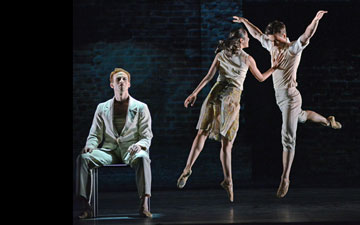

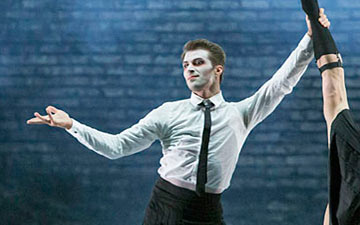
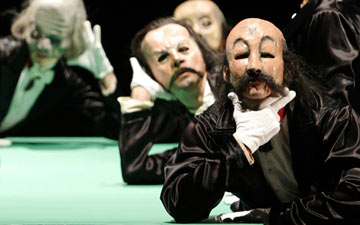
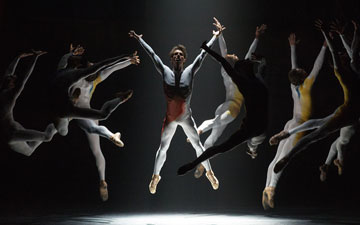
You must be logged in to post a comment.